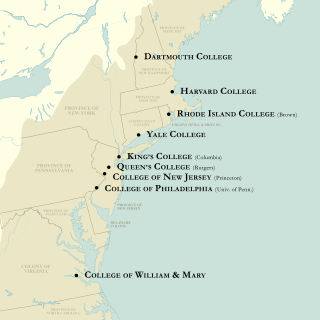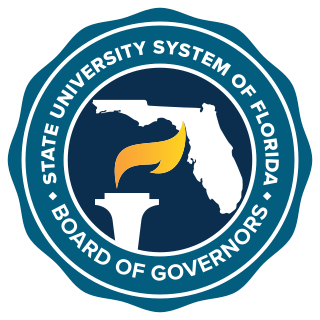
The University of Wisconsin System is a university system of public universities in the U.S. state of Wisconsin. It is one of the largest public higher-education systems in the country, enrolling more than 167,000 students each year and employing approximately 39,000 faculty and staff statewide. The system is headquartered in the state capital of Madison, Wisconsin.
The University of Pennsylvania Carey Law School is the law school of the University of Pennsylvania, a private Ivy League research university in Philadelphia, Pennsylvania. Penn Carey Law offers the degrees of Juris Doctor (J.D.), Master of Laws (LL.M.), Master of Comparative Laws (LL.C.M.), Master in Law (M.L.), and Doctor of the Science of Law (S.J.D.).

John Peter Gabriel Muhlenberg was an American clergyman and military officer who served during the American Revolutionary War. A member of Pennsylvania's prominent Muhlenberg family political dynasty, he became a respected figure in the newly independent United States as a Lutheran minister and member of the United States House of Representatives and United States Senate.

The colonial colleges are nine institutions of higher education chartered in the Thirteen Colonies before the United States of America became a sovereign nation after the American Revolution. These nine have long been considered together, notably since the survey of their origins in the 1907 The Cambridge History of English and American Literature.

John Christopher Kunze was an American Lutheran minister, educator, author and theologian.

The Florida Board of Governors is a 17-member governing board that serves as the governing body for the State University System of Florida, which includes all public universities in the state of Florida.

The California Community Colleges is a postsecondary education system in the U.S. state of California. The system includes the Board of Governors of the California Community Colleges and 73 community college districts. The districts currently operate 116 accredited colleges. The California Community Colleges is the largest system of higher education in the United States, and third largest system of higher education in the world, serving more than 1.8 million students.
The Pennsylvania Department of Education is the executive department of the state charged with publicly funded preschool, K-12 and adult educational budgeting, management and guidelines. As the state education agency, its activities are directed by the governor appointed Pennsylvania's Secretary of Education. The agency is headquartered at 333 Market Street in Harrisburg. The Pennsylvania Department of Education oversees 500 public school districts of Pennsylvania, over 170 public charter schools (2019), Career and Technology Centers/Vocational Technical schools, 29 Intermediate Units, the education of youth in State Juvenile Correctional Institutions, and publicly funded preschools. In 2019, the Pennsylvania Department of Education employs approximately 500 persons.

Millersville University of Pennsylvania is a public university in Millersville, Pennsylvania. It is one of the fourteen schools that comprise the Pennsylvania State System of Higher Education (PASSHE). Founded in 1855 as the first Normal School in Pennsylvania, Millersville is accredited by the Middle States Association of Colleges and Secondary Schools and the Pennsylvania Department of Education.

Frank T. Brogan is an American educator and the former Assistant Secretary of Education. He succeeded Deborah S. Delisle. He is the former Chancellor of the Pennsylvania State System of Higher Education, former Chancellor of the State University System of Florida, and former President of Florida Atlantic University. He was the 15th lieutenant governor of Florida, serving with Governor Jeb Bush.

The history of education in the United States covers the trends in formal educational in America from the 17th century to the early 21st century.
Education in Missouri is provided by both public and private schools, colleges, and universities, and a variety of public library systems. All public education in the state is governed by the Missouri State Board of Education, which is made up of eight citizens appointed by the Governor of Missouri and confirmed by the Missouri Senate.

Joseph M. Torsella is an American politician and former diplomat, who served as the Pennsylvania Treasurer from 2017 to 2021. He served as the U.S. Representative to the United Nations for Management and Reform from 2011 to 2014. He previously served as President and CEO of the National Constitution Center in Philadelphia from 1997 though 2003 and again from 2006 through 2008 and as the Chairman of the Pennsylvania State Board of Education from 2008 through 2011.
Gerald L. Zahorchak is an American educator and the former Secretary of Education for the Pennsylvania Department of Education, a position he held from 2006 to 2010. Throughout the 1980s and 1990s, Zahorchak worked at various Pennsylvania public school districts in a number of positions, including teacher, football coach, principal, federal programs director, strategic planning coordinator and personnel director. Zahorchak worked as superintendent of the Greater Johnstown School District in Cambria County from 1997 to 2003, when he was chosen to be Deputy Secretary for Elementary and Secondary Education for the state. Governor Ed Rendell appointed him Secretary of Education in 2005.
John C. Pittenger was an American lawyer, academic and former Democratic member of the Pennsylvania House of Representatives, serving two non-consecutive terms in the State House. He was appointed the Secretary of the Pennsylvania Department of Education from 1972 until 1976.

Pedro Rivera is the former Pennsylvania Secretary of Education, having been nominated by Pennsylvania Governor Tom Wolf and confirmed in June 2015. Previously, he served as superintendent of the School District of Lancaster. Starting October 1, 2020, he began a new role as President of Thaddeus Stevens College of Technology. A Philadelphia native, Rivera spent 13 years at the School District of Philadelphia before accepting the Lancaster position in 2008. During his tenure, Lancaster saw improved graduation rates, better reading proficiency scores and a growth in financial reserve funds. Rivera has been recognized by The Washington Post and the White House for his academic achievements.

Joe Watkins is an American pastor of the Christ Evangelical Lutheran Church in Philadelphia. He is a Philadelphia-based Republican media analyst who often appears on MSNBC, and is host of Joe Watkins: State of Independence on Lighthouse TV. He has been married to Stephanie Taylor Watkins since 1975. They have three children.

James Pyle Wickersham was an American educator and author in the state of Pennsylvania. He also served as the US Chargé d'Affaires in Denmark in 1882.

United Lutheran Seminary is a seminary of the Evangelical Lutheran Church in America in Gettysburg and Philadelphia, Pennsylvania. It is one of the seven seminaries of the church. It was created in 2017 when the Lutheran Theological Seminary at Gettysburg and the Lutheran Theological Seminary at Philadelphia merged.
William Morton Reynolds was a Lutheran and later Episcopal minister in the United States, professor of Latin, and President of Capital University at Columbus, Ohio, and of the Illinois State University.
















